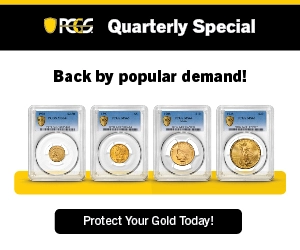By Jack D. Young, Early American Coppers (EAC) ……
As I noted in my past CoinWeek article on the 1795 “off-center” Bust dollar fakes, my discussion at the 2019 Dayton EAC Convention on counterfeits included three “families” of fakes: the 1804 “C-6” half cent set; the 1833 “N-5” large cent set; and the 1795 “off-center” Bust dollar set.
In this installment, I will present and summarize a fourth family series, this one based on the 1799 B-10/ BB-163 large eagle reverse dollar.
One of the first examples we saw was an 1802 from an internet venue back in early 2018. While we were discussing it in a Facebook group I administer, CoinWeek was also reporting on it with an NGC article using the same images; apparently, it was submitted for certification and kicked back, and then someone attempted to sell it raw. Upon further review, NGC had actually posted their article on September 16, 2014, so these have been “out there” for a while!
Images of the subject 1802 Bust dollar:
The “1802” Draped Bust dollar. Images courtesy NGC
This “coin” does not match any genuine 1802 variety and has one significant obvious feature we nicknamed the “flattened 1”. The internet listing was removed as a counterfeit.
Recently a version with the “1801” date had been seen for sale on the internet. Surprisingly, the date is similar but different in the thickness of the numerals yet it also has a flattened first 1, and the reverse appears to match with several duplicate marks. Interestingly enough, the 1802 reverse shows some doubling indicative of die bounce while the 1801 shows apparent “die breaks”.
Images of the 1801 compared to the 1802 (white indicates common, red non-common marks):
“1801” internet example; “1802” images courtesy NGC
“Flattened 1” date detail
And like the 1802, this 1801 doesn’t appear to match any genuine variety and the internet listing was also removed as counterfeit.
Further internet searching uncovered a similar-looking example for sale in the same venue with the date “1799”. This one has many matching reverse marks to another internet example–as well as the 1801 and 1802–but does not have the “flattened 1” feature in the date and has some unique marks (in red). It appears that the counterfeiters are “mixing it up” as they strike additional examples.
Two internet “1799” examples
Reverse of internet “1799” examples above
The example on the right appears to better match a genuine B-10 1799 Draped Bust dollar, but common “markers” between the two suspect examples’ reverses and to the 1801 and 1802 counterfeits cannot be overlooked.
Left: Genuine 1799 B-10; image courtesy PCGS. Right: Internet “1799” example
Reverses of (Left) Genuine 1799 B-10 (image courtesy PCGS) and (Right) internet “1799” example
Common reverse marks between the three:
“1802” example image on the right courtesy NGC
And then there is this “1798” member of the “family”:
“1798” internet example
Again, the big problem here is that this is the reverse of the 1799 B-10–a reverse that wasn’t used for the 1798. So this is yet another of the “family” counterfeits based on the 1799 B-10 variety that also includes 1800-1802 dates as well. The image shows the major common circulation marks between the 1799, 1801, and 1802 counterfeits that also show on this one.
And the family continues to broaden. During the writing of this article, we were presented yet another example in a different selling venue: an 1800-dated example from Mexico.
Seller’s “1800” example images
And as for the counterfeiters “mixing it up” as I noted above, they appear to continue to alternate dies as they create the ultimate Draped Bust dollar errors!
“1801 double strike” image courtesy Rob Oberth
Author’s “off-center strike” example and image
These two frauds utilize different obverse dies with a common (1799 B-10) reverse.
As I have continued to state in my other articles, one of the best ways to protect yourself from this type of fake for sale is to learn the coin series yourself.
Buy the reference books. Join a discussion group or club focused on your interests such as Early American Coppers (EAC), and ask other experienced members and friends. And review similar items on the internet – major auction house sales archives and NGC and PCGS’s variety pages are great online resources.
As always, the research and summary articles continue to be a collaborative effort with many EAC members and “Dark Side” friends participating and contributing!
Watch out for more of these…
Best,
—Jack D. Young, EAC 5050

I have a 1795 most surely a counterfeit how can I send you pictures to have a look at. I got that and a few more in Mexico